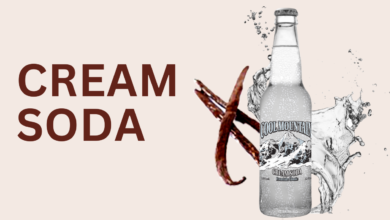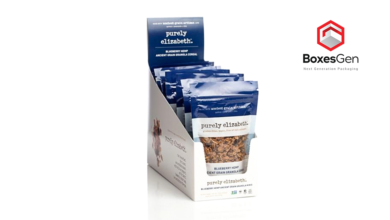Alpha-isomethyl Ionone Production Process with Cost Analysis: A Comprehensive Guide to Manufacturing and Market Insights
The Alpha-isomethyl Ionone Production Process with Cost Analysis offers an in-depth exploration of the production methods, cost factors, and market dynamics surrounding this versatile fragrance ingredient.
Introduction
The Alpha-isomethyl Ionone Production Process with Cost Analysis offers an in-depth exploration of the production methods, cost factors, and market dynamics surrounding this versatile fragrance ingredient. Alpha-isomethyl ionone is widely used in the perfume, cosmetics, and personal care industries due to its pleasant floral and woody scent. As demand for high-quality fragrances grows, understanding the production process, raw material requirements, and cost drivers becomes essential for manufacturers looking to optimize their operations and remain competitive. This report provides valuable insights into the alpha-isomethyl ionone production process and how businesses can navigate the market efficiently.
Request Free Sample – https://www.procurementresource.com/production-cost-report-store/methyl-ionone-alpha-iso/request-sample
Procurement Resource Assessment for Alpha-isomethyl Ionone Production Process
The Procurement Resource Assessment for alpha-isomethyl ionone production focuses on the availability and sourcing of essential raw materials, particularly ionone isomers and chemical precursors that are vital to producing this fragrance compound. A strategic procurement process ensures manufacturers can consistently access the required materials at competitive prices, while also mitigating risks associated with supply chain disruptions or market fluctuations.
Alpha-isomethyl ionone is synthesized through chemical reactions involving ionone isomers, which are derivatives of beta-ionone, a compound commonly found in the essential oil of certain flowers and plants, particularly violet and orris root. Ensuring the purity and quality of these isomers is crucial to achieving the desired scent profile and chemical stability of alpha-isomethyl ionone.
Procurement strategies for raw materials must consider factors like market trends, geographic availability, and pricing dynamics, as well as environmental and sustainability concerns. Suppliers that adhere to sustainable sourcing practices, particularly in natural beta-ionone extraction, are highly valued in the fragrance industry due to the growing consumer preference for eco-friendly and ethically sourced ingredients. Developing strong supplier relationships and diversifying sourcing options can help businesses secure their supply of raw materials and reduce overall production costs.
Understanding Alpha-isomethyl Ionone
Alpha-isomethyl ionone (CAS 127-51-5) is a synthetic fragrance compound derived from ionone, a family of aromatic chemical compounds commonly used in perfumery. Alpha-isomethyl ionone is renowned for its sweet, floral, and woody scent with violet undertones, making it a popular choice for use in fine fragrances, body care products, and cosmetics. It is widely appreciated for its ability to enhance and fix other fragrances, contributing to long-lasting scent retention.
Its application extends beyond perfumes and body sprays to include soaps, shampoos, lotions, and other personal care products. The compound’s chemical stability and pleasant olfactory profile also make it suitable for detergents, air fresheners, and cleaning products.
In addition to its broad utility, alpha-isomethyl ionone adheres to safety and environmental standards, making it an attractive option for formulators who need ingredients that comply with strict regulations in the cosmetic and fragrance industries.
Market Drivers
The demand for alpha-isomethyl ionone is driven by several key factors, which are boosting its usage across a wide range of products in the fragrance and personal care markets. These market drivers include:
- Growth in the Fragrance and Perfume Industry: The global fragrance market is experiencing significant growth due to increasing consumer demand for luxury perfumes and personal care products. Alpha-isomethyl ionone’s distinct scent profile makes it a key ingredient in high-end and mass-market fragrance formulations. Its ability to enhance other fragrances has made it a cornerstone for perfumers worldwide.
- Expanding Personal Care and Cosmetics Market: As consumer awareness of personal grooming and hygiene grows, so does the demand for high-quality cosmetics and personal care products. Alpha-isomethyl ionone is widely used in shampoos, lotions, deodorants, and skincare products, contributing to its steady market demand.
- Sustainability Trends in the Fragrance Industry: Increasing demand for eco-friendly and ethically sourced ingredients is shaping the fragrance and cosmetics industries. Alpha-isomethyl ionone, when derived from sustainably sourced ionone isomers, fits well within the trend of responsible sourcing. Companies looking to meet consumer demands for sustainable products often seek out fragrances that comply with environmental standards.
- Growth in the Household Care Products Market: In addition to personal care items, alpha-isomethyl ionone is used in household products like detergents, air fresheners, and cleaning agents. The growing market for household care products, driven by increasing global demand for hygiene and cleanliness, is another driver for alpha-isomethyl ionone.
- Product Innovation and Expansion: Manufacturers are increasingly exploring the versatility of alpha-isomethyl ionone by using it in a broader range of products. Innovations in product formulations and the growing popularity of niche fragrance segments are contributing to the increased demand for this compound.
Raw Materials Requirements
The production of alpha-isomethyl ionone requires specific raw materials, with ionone isomers being the key ingredient. The following are the essential raw materials required in the alpha-isomethyl ionone production process:
- Beta-ionone: Beta-ionone, derived from the breakdown of carotenoids in natural sources like violet, orris root, and some essential oils, is a key precursor for synthesizing alpha-isomethyl ionone. It is an important raw material that undergoes chemical modifications to produce alpha-isomethyl ionone.
- Catalysts: Catalysts are used to facilitate the isomerization of beta-ionone into the alpha form. These catalysts must be selected carefully to ensure the efficiency and yield of the reaction, as well as the purity of the final product.
- Organic Solvents: Solvents, such as ethanol or other organic liquids, are used during the reaction process to dissolve reactants and facilitate the conversion of beta-ionone into alpha-isomethyl ionone. High-purity solvents are essential to avoid contamination of the final product.
- Acids or Bases: Depending on the synthesis method, acids or bases may be used to catalyze specific chemical reactions in the production of alpha-isomethyl ionone. These reagents must be precisely measured and handled to maintain the integrity of the process and ensure a high yield.
- Water and Purification Agents: Water is required for washing and purifying the alpha-isomethyl ionone at various stages of production. Ensuring the use of high-purity water helps eliminate impurities and maintains the product’s quality.
Sourcing these raw materials from reliable suppliers is critical to maintaining production efficiency and ensuring the quality of the final alpha-isomethyl ionone product. Careful attention to the purity and stability of beta-ionone, in particular, is essential for achieving the desired scent profile and consistency in the fragrance industry.
Costs and Key Process Information
The Alpha-isomethyl Ionone Production Process involves several key steps, each of which contributes to the overall production costs. These steps include:
- Isomerization Reaction: The production process starts with the isomerization of beta-ionone to alpha-isomethyl ionone. This is done by using catalysts and solvents in a controlled chemical reaction. The efficiency of this reaction largely depends on the quality of beta-ionone, as well as the careful selection of catalysts to optimize the conversion rate and minimize byproducts.
- Separation and Purification: After the isomerization reaction, the crude alpha-isomethyl ionone is separated from the reaction mixture and purified. Solvent extraction or distillation methods are commonly used to isolate the desired compound. Purification is critical for removing impurities that could affect the fragrance’s performance in final applications.
- Distillation and Refining: The purified product is then distilled to ensure a high level of purity and consistency. Distillation is essential for removing any remaining solvents or impurities that may have been carried over from the initial stages of production. This step ensures that the final product meets the rigorous standards required in the fragrance industry.
- Quality Control and Packaging: Before the final product is packaged, it undergoes quality control testing to ensure it meets fragrance industry standards. The packaging process must be carefully managed to protect the product from contamination and degradation.
Cost Factors
Several factors contribute to the overall cost of producing alpha-isomethyl ionone, including:
- Raw Material Costs: The price of beta-ionone, catalysts, and solvents are the primary cost drivers in the production of alpha-isomethyl ionone. Fluctuations in the availability and cost of these raw materials, particularly beta-ionone, can significantly affect production costs.
- Energy Consumption: The production process requires energy-intensive steps, particularly during the distillation and purification phases. The cost of electricity and other energy sources can have a notable impact on the overall production cost.
- Labor and Equipment Costs: Skilled labor is necessary to operate the chemical reactors, distillation columns, and purification systems used in alpha-isomethyl ionone production. Additionally, the cost of maintaining and upgrading equipment contributes to the overall cost structure.
- Regulatory Compliance: Compliance with safety and environmental regulations, particularly in the handling of volatile organic compounds (VOCs) and waste management, adds to the production cost. Meeting international fragrance industry standards also requires thorough quality control, which involves additional costs for testing and certification.
Looking for an Exhaustive and Personalized Report?
For businesses seeking to optimize their production process or explore the growing market for alpha-isomethyl ionone, an exhaustive and personalized report can provide invaluable insights. These reports offer:
- Detailed Market Analysis: Including demand forecasts, trends, and growth opportunities for alpha-isomethyl ionone in various sectors such as fragrances, cosmetics, and household care products.
- Cost Optimization Strategies: Offering recommendations for reducing raw material expenses, energy consumption, and operational inefficiencies to streamline the production process.
- Sustainability and Regulatory Compliance Guidance: Helping businesses align with sustainability initiatives and comply with international regulations for fragrance ingredients.
By investing in a personalized report, companies can gain a competitive advantage, improve production efficiencies, and position themselves for success in the expanding alpha-isomethyl ionone market.
About Us:
Procurement Resource is an invaluable partner for businesses seeking comprehensive market research and strategic insights across a spectrum of industries. With a repository of over 500 chemicals, commodities, and utilities, updated regularly, they offer a cost-effective solution for diverse procurement needs. Their team of seasoned analysts conducts thorough research, delivering clients with up-to-date market reports, cost models, price analysis, and category insights.
By tracking prices and production costs across various goods and commodities, Procurement Resource ensures clients receive the latest and most reliable data. Collaborating with procurement teams across industries, they provide real-time facts and pioneering practices to streamline procurement processes and enable informed decision-making. Procurement Resource empowers clients to navigate complex supply chains, understand industry trends, and develop strategies for sustainable growth.
Contact Us:
Company Name: Procurement Resource
Contact Person: Amanda Williams
Email: sales@procurementresource.com
Toll-Free Number: USA Canada – Phone no: +1 307 363 1045 | UK – Phone no: +44 7537 132103 | Asia-Pacific (APAC) – Phone no: +91 1203185500
Address: 30 North Gould Street, Sheridan, WY 82801, USA





